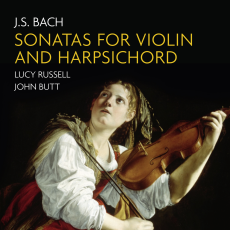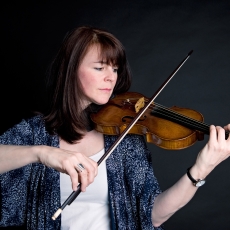John Butt & Lucy Russell - J.S. Bach: Violin and Harpsichord Sonatas - Brompton’s Fine & Rare Instruments
A superb new recording of J.S.Bach's Sonatas for Violin and Harpsichord performed by Lucy Russell (violin) & John Butt (harpsichord) is now available on Linn Records. Lucy Russell plays on a very fine violin by Ferdinand Gagliano, purchased at Brompton's. The recording was recently and deservedly chosen as CD of the week on Radio 3's weekly CD review.
Despite the fact that performance tradition and the practice associated with it in the accompanied violin sonatas of JS Bach are strong advocates for their repeated recording, it is not to say that there does not need to be a rational argument behind each. It is fortunate, then, therefore, that the pairing of Bach scholar John Butt and eminent Baroque violinist and teacher Lucy Russell creates a justification for this recording, even before the performance itself receives closer examination.
The accompanied violin sonatas are, in fact, the Trio Sonata According To JS Bach. They may only employ two instruments, rather than three, but they are typical of Bach's indefatigable desire to learn, understand, perfect, and even (as he does here) subvert existing forms into new ideas. They constitute a wildly varied set of pieces that heralded the dawn of the Classical period years before it began, and it is therefore surprisingly hard to find a performance of these masterworks that exposes their inherent dignity and integrity: they are not dazzlingly virtuosic, nor do they represent a particularly important period in Bach's life, but they do nevertheless represent a turning-point in the use of instruments and counterpoint. And so it is therefore hardly surprising that such insight and integrity is to be found in the performance of specialists such as Russell and Butt.
Because of these works' trio sonata backstory the most important balance is between the violin and the right hand of the keyboard. There is a lot of counterpoint between these parts, with the harpsichord often in the dominant role. That counterpoint is the dynamo that creates the energy to propel the music forward, and Russell and Butt's is a purely shared experience in that way: the violin's long phrases in the slow movements and intricately-articulated action in the fast surge and subside in order to protect the quick decay in the harpsichord sound, and their performance illustrates perfectly how one instrument here cannot, and should not, survive without the other.
Fundamentally, though, there is a fragility and subtlety in this performance that keeps the listener in constant contact with the detail in these pieces. Bach tends to think fugally when he writes his fast movements in these sonatas, and to bring out the bold dialogue between the three parts in the way Russell and Butt do here is to bring out the joy in them: if there is no sense of the banter that should come from a fugue, then no joy will follow either. There is similar insight in the slow movements, which are soulful in their infinite variety and concentrate on wrangling their many complicated roots into one, each with its own formal ideas and unique identity.
But, above all, it is the guileless clarity of Russell and Butt's performance of the F Minor sonata's Adagio movement that crystallises everything that most commends this disc. As with the modern instrument recording of Frank Peter Zimmerman and Enrico Pace, Russell emphasises each repeated note with an infinitesimal lift - just enough to emphasise the line without disturbing it - allowing the listener to wonder whether the actual melody is the most obvious line in the piano part, or the bottom line of the double-stopping in the violin, and finally leaving them with the inkling that all three of the trio sonata lines that Bach appropriated here into a new form might simply be an accompaniment, supporting a fourth melody singing over the top, that we can only imagine.


